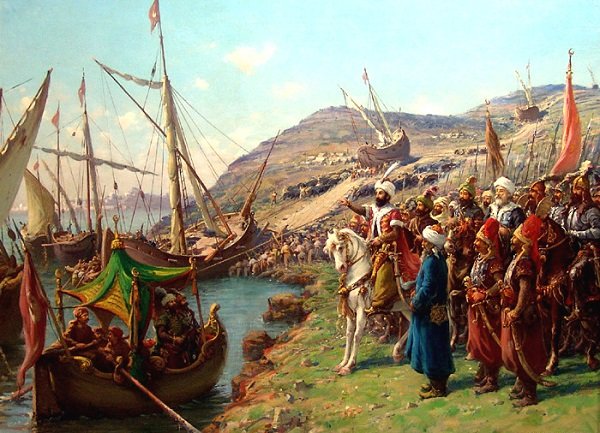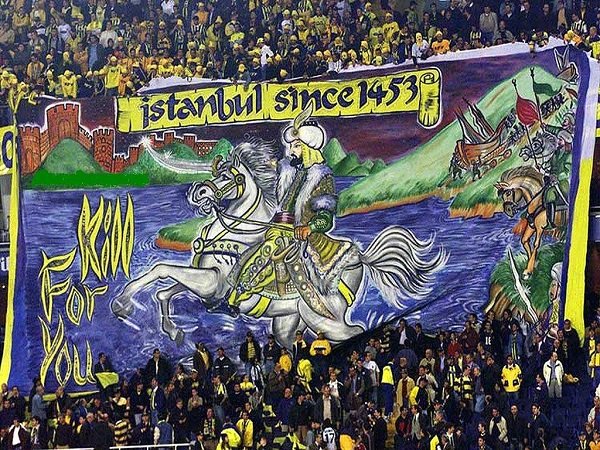The conquest of Istanbul, one of the most populous metropolises in the world, was the fall of the Byzantine Empire and uslasted a whole new era. So, are we ready to learn the details and interesting features of this conquest?
The Walls
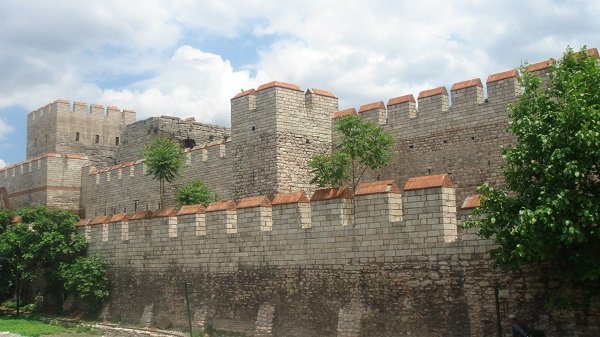
The walls surrounding the Byzantine city were 20 kilometers long. Theodosian Walls on the anti-enemy Yedikule-Topkapi line are 5.5 km. He was filming. The most powerful walls in the whole city were in this position. The wall along the estuary, protected by less frequent guards, is 7 km. The Marmara Wall from the Marmara Sea to Yedikule is about 7.5 km. it was long. It should be said that Istanbul has the best walls in the world compared to other cities of the time. Most of the walls were repaired in the 1440s and were in pretty good condition when the siege began.
Instead of erecting men on all the walls at the same time, the Emperor chose to protect only the outer walls. Emperor Constantine himself defended the weakest point of Theodosian Walls, which was also protected by trenches on two rows of high walls, and venetian soldiers guarded the edirnekapi area to the north by The Venetian commander Giustiniani, the Ayvansaray Curvature (Blachernae) between Kos and Thesysian king Leonardo, and the Yedikule region. Looking at the general situation, we can only think that even with the settlement of the walls, the defenders believe that they are in the best protected city in the world. As a matter of fact, there were some points during the siege that fatih did not miss. For example, the 11th century walls at the Curvature, one of the key points of the northern walls, were in poor condition because they were not repaired. With a hit from the Big Shahi Ball, the situation here would be a very bad situation for the defenders.
Ball
It’s been written and drawn a lot about the ball. We all heard Fatih‘s balls somehow. In fact, there are some people who name their children Shahi for some reason. But it wasn’t in vain that this weapon was so famous. Although gunpowder and artillery have been used in wars before, no one has tried this in a way as great as the Ottomans. The Byzantines also had mechanisms that fired using carbaruts in the walls, but because the reversal and retrabbing control was very difficult in that era, the Byzantines caused more damage to their own walls than the enemy with repatriations.
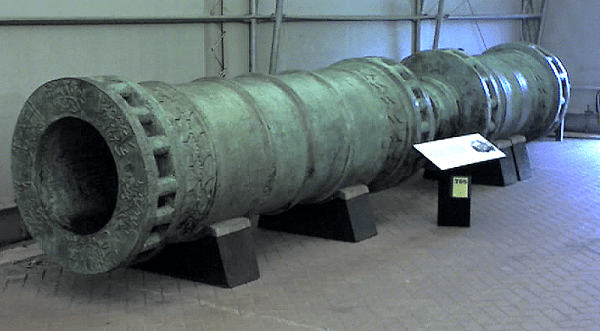
This ball was 20 feet long. His 75cm-diameter cannonball weighed 544 kilos. It took three hours to fill, so it could only be fired five or six times a day. When the ball was placed on the ground and fixed, it could not be rotated again. It was so heavy that its producer, Hungary Urban, had the ball poured into the molds in two pieces, calculating that no ox cart could carry it. Thus, it was used by adding to each other with a screw system that was very advanced according to its time. It was impossible to aim or anything, but when the target was as big as Istanbul, eventually a cannonball hit one side of the walls. And as soon as it hit the walls, it could take a week to repair that spot with byzantine masons working day and night.
Another lesser-known feature of this cannon is that in 1807, 354 years after the conquest of Istanbul, it fired one shot at British ships trying to cross the Dardanelles, killing 22 people and forcing the British to retreat. Later, in memory of the incident, Sultan Abdulaziz presented the British with a sample of the ball made in 1464. It is currently on display at the Fort Nelson Artillery Museum in England.
Defenders
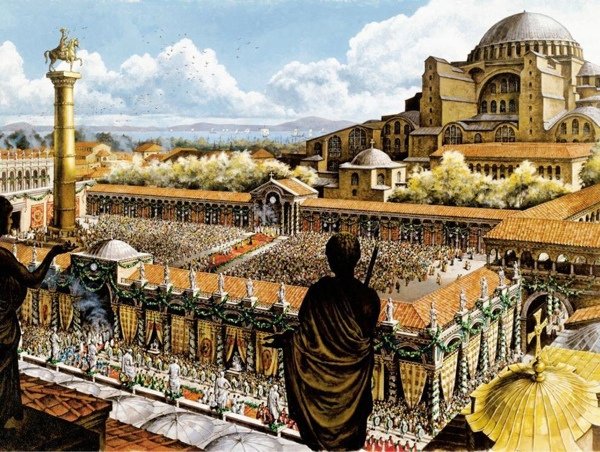
Until 1453, Istanbul was one of the most defensive cities in the world in the classic siege war. A peninsula surrounded by seas on 3 sides was protected by an adequate wall system, and it was able to defend itself beautifully by keeping a single foe open to the enemy. Istanbul had been besieged 20 times by then, and only once, in 1204, it was brought down by the Latin Crusaders thanks to enrico dandolo’s games. In any siege, genoese could occasionally receive aid, supplies and troops from the sea. The Byzantine emperors were able to terrorize any enemy fleet in the Marmara Sea and keep their supply routes open thanks to their ships launching Greek Fire, the secret of which is still unknown. Even if the supply was cut off, we can look at previous examples and say that Byzantines would resist a siege for years without being hungry.
In April 1453, there were 7,000 soldiers, including 2,000 foreigners, guarding the walls of Istanbul. The people inside the walls were about 50,000. Another little-known interesting narrative about the defenders is that among the mercenaries of the Byzantine emperor, there is a Turkish commander called Dorgano and a Turkish contingent of 600 people. According to the memories of Nicolo Barbaro, the Genoese surgeon of Istanbul, there were no survivors among these soldiers who defended the sea part between Yedikule and Yenikapi and remained loyal to the emperor until the last moment. Some historians say that Dorgano was Orhan Çelebi, a remnant of the fetish era.
Ottoman Army
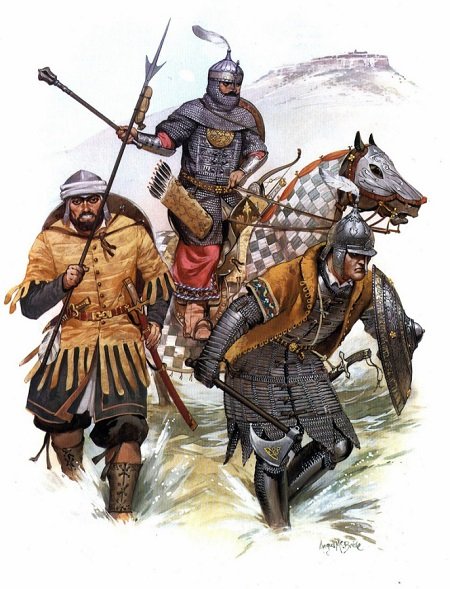
The number of ottoman army in a war includes different changes in different sources, according to the idea that the fleeing soldier sees the enemy double. In fact, four different sources who were in Istanbul at the time of the conquest conveyed irrelevant data on the number of Ottoman armies surrounding the city. Nicolo Barbaro counted 160,000, the Cardinal of Kiev counted 200,000 and the Archbishop of counted 300,000. In modern historical analysis, it is thought that the Ottomans had a siege army of between 50,000 and 80,000. Since 10,000 of them are elite newcomers, the attacking Ottoman army is much further ahead in both numbers and quality than the Byzantines who defended them. The Ottomans, on the other hand, were more cosmopolitan in the 8th century than the Muslim-Arab army, which surrounded the city with 100,000 people. There were thousands of Christians in the army. In fact, there are 1,500 Christian Voynuks that Serbian King Brakovic sent/rented to Fatih as a tax.
Hagia sophia
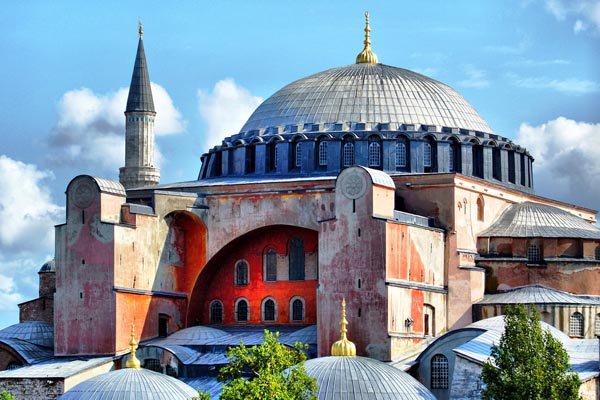
What is it, not admirable, that a huge 1,500-year-old structure still stands in Istanbul, which has a major earthquake every century? However, Hagia Sophia is much more than a gigantic structure. It is such a great symbol that every Turk who attacks the walls on the day of the siege wishes to pray inside this giant shrine. Every soldier who defends the walls stands ready to die to avoid giving the largest church of Christianity to Muslims. When the walls were torn open and Istanbul fell, hundreds of people took refuge in Hagia Sophia and prayed that Jesus would return to earth and turn the situation around. Those who replace Jesus are the newcomers who break down the bronze doors and remove everyone. Foreign sources write that Turkish strays are slaughtering and contaminating sacred items inside, while Turkish sources deny this. The last Christian mass in Hagia Sophia was held on 28 May 1453 with the participation of the emperor. Perhaps it was the first time since the Great Schism that Catholic and Orthodox clerics from the Eastern and Western Churches held a joint mass in Hagia Sophia. The next evening, the icons were covered with blankets and carpets and conquest prayers were held in Istanbul. Sultan Mehmet was thus promoted to conqueror.
In the intervening 561 years, it is also interesting that Hagia Sophia can still play on inter-country policies and international feelings. The Greeks never accepted the loss of Hagia Sophia. One of the important motivations of the Greek occupation in 1919 was the recapture of Istanbul and this structure. Even today, far-right Greek groups commemorate Byzantine every May 29th and protest against the return of the church. It is the number one request of the Lantern Patriarchate that this place be a church again. On the other hand, the issue of Hagia Sophia, which has now become a museum, becoming a mosque again is one of the most prominent requests of the Muslim community. This is one of the most sensitive issues to be touched in the country.
Galata
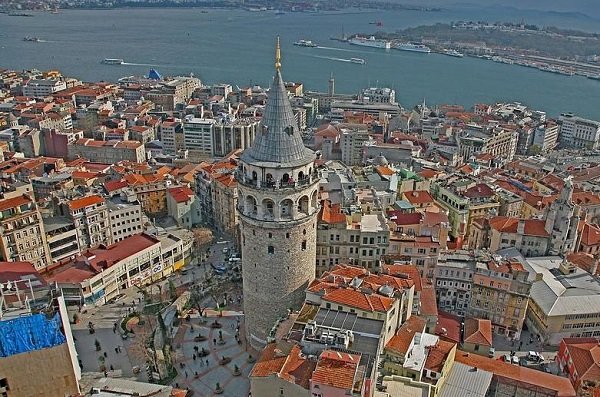
In 1453, Galata and Constantinople were two different settlements, even though they were two neighboring districts separated by sea in Istanbul today. Galata was a Genoese colony. It was relatively easy to defend, since it was a peninsula in a sense. Although it was a form that supported Byzantines to the end under all circumstances, this colony was neutral on paper. This created a number of complications for the military force that came to encircle The Byzantines. First of all, the neutral Galata Colony fed itself with its own ships and strengthened its leverage in the siege by selling surplus to byzantines. Moreover, this trade could not be prevented because it was carried out by ships on a line like karaköy-eminonu and the mouth of the Golden Horn was closed with a chain. Moreover, although this colony holding the Galata mouth of the chain was actually very biased (belligerent) in today’s understanding, Sultan Mehmet did not specifically inflict violence on them. The number one reason for this can be interpreted as the fact that it does not want to see a united Italian Navy that came to the aid of byzantines in the Marmara Sea. In return, the ships walk by land, making no history of the Galata Colony doing much.
Fatih Sultan Mehmet
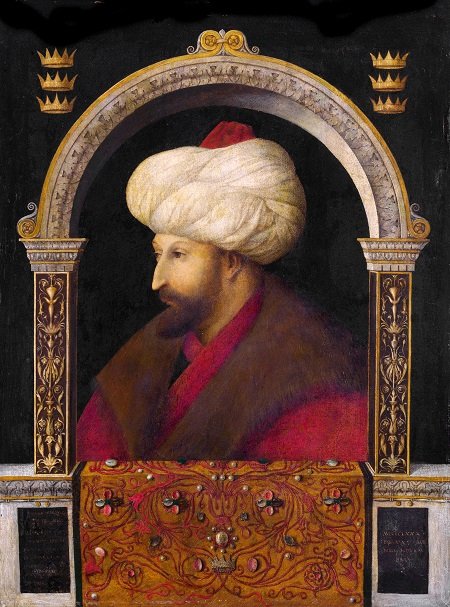
Everything written about Sultan Mehmet the Conqueror has an motto to lure him to that camp or this camp. When “Ecdad” is mentioned, Fatih Sultan Mehmet comes to mind. He is a sultan who has taken the Christian capital in the hearts of millions of people.
It is, but it’s much more than that. Fatih Sultan Mehmet speaks Greek as his mother tongue, which he learned as a child. He has repri’t been granted the Banner of Amasya. When he became a conqueror, he carefully preserved the ancient Greek artifacts that he inherited from Byzantine, including the obscene ones. He is a leader beyond his time to pay all kinds of respect to the funeral of the Byzantine emperor. He is forward-thinking enough to represent a Renaissance concept that makes him paint a self-portrait in an understanding that surrogace is forbidden. He is a poet who has survived his literary language to this day, and his poems do not contain only religious elements. However, today, “Fatih” has taken on a personality that is no longer isolated from religion, starred in the translation of the feelings of the religious people, and was disguised as an alternative “ancestor” to Ata.
Let’s say that he and we deserve much better than this.
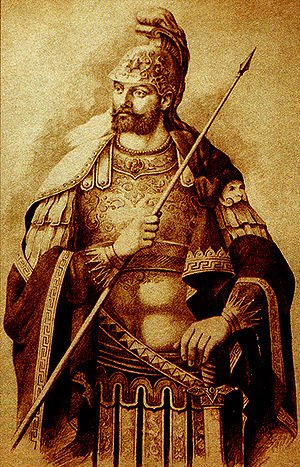
Konstantin XI. Palaiologos
First of all, it should be said that the last Byzantine Emperor Konstantin Palaiologos was a man who saved his life and rejected many options, such as becoming king/emperor of another country. 8 days before the conquest, Sultan Mehmet sent an envoy to the Emperor, informing him that in exchange for the surrender of the city, he would allow the Emperor and his family to leave the city with their goods, he would recognize himself as the King of Peleponez, and everyone who stayed in the city would not be allowed to spare their lives and rain. The emperor refuses the last mercy shown to an emperor by a sultan who surrounded the city with an army six or seven times the size of an army. He says that if the siege is lifted, the tax to be paid will be higher and that he will recognize all the castles taken by the Ottoman Empire as legitimate. But when it comes to giving up the city, he says:
“It is not in my hands or anyone else’s who lives in the city to give you this city. We chose to die here on our own choosings instead of giving this place up. We don’t put our lives on it.”
When he learned that the walls had fallen during the siege and that some neighborhoods of the city had fallen into The Turks’ hands, he removed the eagle symbol from his chest, removed the imperial coat of arms and purple cape, and chose to die as an unnamed Byzantine soldier in the streets he once ruled, rather than continue to the kingdom elsewhere. Considering that rulers like Saddam are caught hiding in underground holes today, the respect that the Byzantine Emperor, who was dignified in his last moments, deserved but never received from us victors, will be revealed.
Giovanni Giustiniani Longus
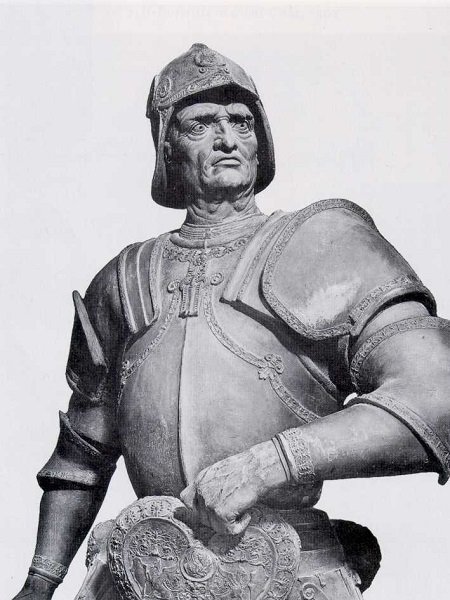
Giovanni Giustiniani is a Genoese sailor. When the first news of the siege came, he paid out of pocket and went to the defense of Istanbul with 700 soldiers, mostly Greek and Genoese, from the island of Kos. During defense, it is the most key role in every source, every memory that comes to the present day. His presence kept morale high in the walls, and his leadership ability channeled venetians, Genoese and Greeks who normally hated each other to repair the walls instead of arguing with each other. Giustiniani was fatally wounded on May 29, the day of his conquest. Some sources say that one cannonball hit too close, while another wrote that it was hit by a Tatar arc. However, the point that everyone agrees on is that when Giustiniani is taken from the walls on a stretcher toWards Yenikapi, panic now spreads irreversibly, and everyone who is a prisoner of fear begins to flee. Even the Emperor’s presence at the scene cannot overshadow the abandonment of the 700 Genoese, the most valuable unit of defense. As a matter of fact, whoever the archer or artilleryman who wounded this man in the Ottoman army, it seems unfair to him that we know his name less than Hasan the Great.
Giustiniani left the city on ships despite the Emperor’s pleas as a result of his injuries, but died two days later on the Island of Kos.
Chain
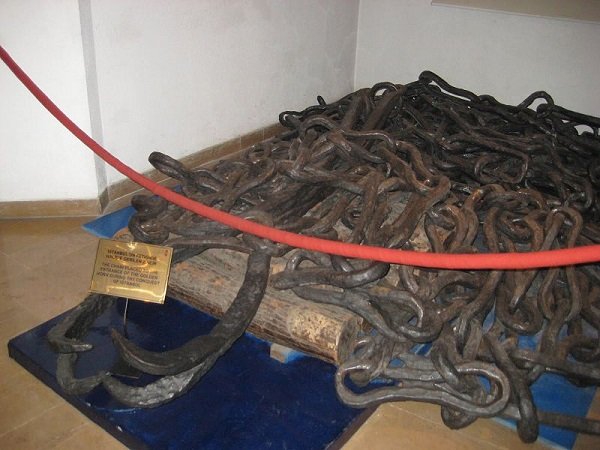
The Golden Horn between Galata and Istanbul was at great risk to defence. Any navy that entered the Golden Horn in ships full of soldiers would have cut off the city’s not-so-defensible belly. The Byzantine walls along the estuary were not as high or as important as those in the west of the city. If the ships could land their troops in today’s Sirkeci area, they could force the imperial palace with 100 people landing on these ships. To make matters worse, the defenders would have to shift troops here by Edirne, the main direction of the attack.
Instead, the Byzantines gathered the blacksmiths and made a chain of forged iron hundreds of meters long. This chain, which was attached at one end in today’s Basketmakers Pavilion and the Galata end in today’s Underground Mosque, was blocking the Golden Horn to sea traffic. There was no way to cut the chain in the middle of the sea anyway. The ships didn’t get very close because they were well defended where they were attached. Sultan Mehmet did not run the ships from land for nothing, so. There’s no other way. Separately, just as the men beat iron with resentment, most of the chain is on display at the Naval Museum, not so rusty.
Land-moving ships
It has not been as easy as breaking the game of the Byzantines, who have closed both sides of the city to the enemy with something as cheap as the chain, but no one who argues that this game will be broken does not expect the walls to be broken. In theory, there are two practical reasons for landing ships in the Golden Horn. First, the traffic of supplies and equipment between Galata and Constantinople is very annoying. Byzantines are getting help in front of the Sultan. Secondly, Sultan Mehmet saw that the walls along the Golden Horn were not well protected. By threatening this part for show, he wishes to withdraw some soldiers from the Walls of Theodosius so that they could wait here for nothing. The ships were put on sleds and landed in Dolmabahce on oily logs and landed again in the sea from Tarlabasi-Kasimpasa. So less ice isn’t a road.
As a matter of fact, this has nothing to do with the day of conquest. The ships land in the Golden Horn on April 21, one month before the conquest. As well as landing, they stop boat boat traffic between Galata and Constantinople. The Byzantines are very upset about it. On April 28, they embark on an operation to clean up the Golden Horn using their famous fireship. However, the Ottomans were warned before and this account is in vain. Byzantine fireships retreat to the port with casualties. The next day (April 29th), the Byzantines took 260 Turkish prisoners to the walls and beheaded them in retaliation. Zağanos Pasha perceives this as a weakness and harasses the Golden Horn Wall nonstop until the end of the siege.
Ulubatli Hasan
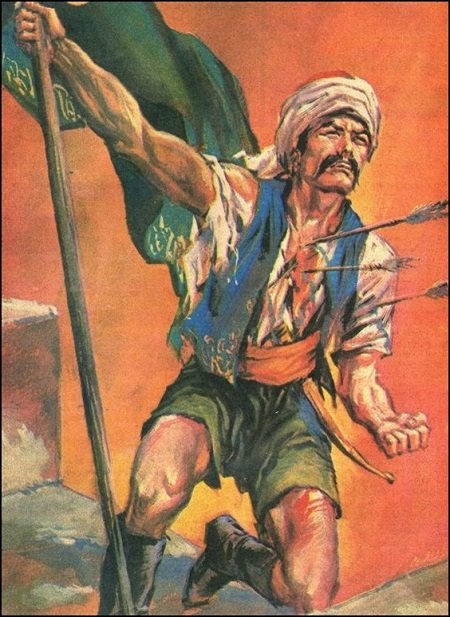
There is probably no other way in Turkish culture for such a low-ranking soldier to be so memorable. Knowledge/data about his past is of course scarce, but the Scottish historian Lord Kinross refers to himself in his book “Ottoman Centuries” as a very long “giant”. Bursa’s Karacabey accident Hasan from Ulubat Village climbed the wall with a ladder on May 29; He reached the top under a rain of arrows, stones and spears, planted the flag on the walls and protected his flag until 12 more of his friends climbed the hill with a small shield and curved bed. He then collapsed; After the conquest, 27 arrow wounds were counted on his body. According to foreign sources, the flag was later dismantled and the walls were retashed, but the flag so excites the Turks that it was not possible to hold them from that moment on. Finally, someone came out and showed me that this could happen with their life. Turkish sources say the flag he planted remained on the walls as long as Fatih ruled.
Plunder
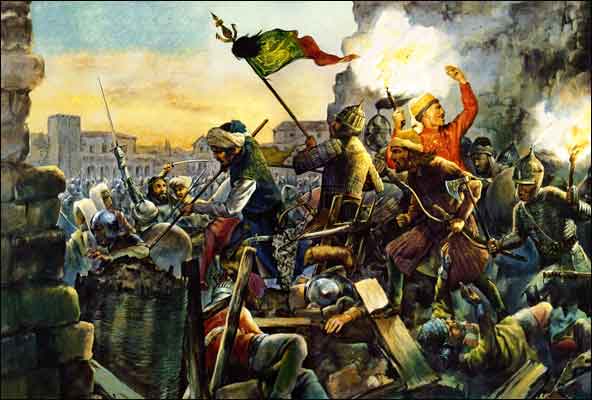 Looting or extortion is now a crime that carries a sentence of 6 to 10 years, but in the military of the 1400s it was a kind of incentive. Allowing soldiers to loot has historically been recognized to soldiers and used as a kind of optional weapon that military commanders carry in their pockets as a feature that increases their combat power. The medieval man, who was close to impossible to study and skip classes as he is today, had two problems with a comfortable life, only to survive the war and to be quick. Fatih’s army also observed this custom. Fatih Sultan Mehmet allowed the city, which was not delivered with vire, to be looted by soldiers for three days after the conquest.
Looting or extortion is now a crime that carries a sentence of 6 to 10 years, but in the military of the 1400s it was a kind of incentive. Allowing soldiers to loot has historically been recognized to soldiers and used as a kind of optional weapon that military commanders carry in their pockets as a feature that increases their combat power. The medieval man, who was close to impossible to study and skip classes as he is today, had two problems with a comfortable life, only to survive the war and to be quick. Fatih’s army also observed this custom. Fatih Sultan Mehmet allowed the city, which was not delivered with vire, to be looted by soldiers for three days after the conquest.
Compared to today’s conditions, very handy images will emerge. Slavery is a fact of the age. Therefore, since Istanbul was besieged at a time when people were also the subject of looting, the people who took refuge in churches after the conquest, who hid in their homes, were removed from their hiding places and sorted according to their social status or bodily characteristics, and most of the people in the lower classes were sent to slave markets. According to foreign sources, rape and slaughter are said to be intense in Istanbul in the days after the conquest. The public hid for three days to escape. However, Byzantine court historian Georgios Sphrantzes describes the end of the looting as follows:
“On the third day of the fall of our city, the Sultan entered the city with joy and victory. Then he made a statement. It was said, ‘People of all ages living in this city will now be exposed from their hiding places. They won’t be asked questions because they’re still free.’ He then gave the belongings of those who had left the city before and lost their property to the beneficiaries. He said that if they returned home, they would be owners again, regardless of rank or religion, as if nothing had changed.”
Those who escaped
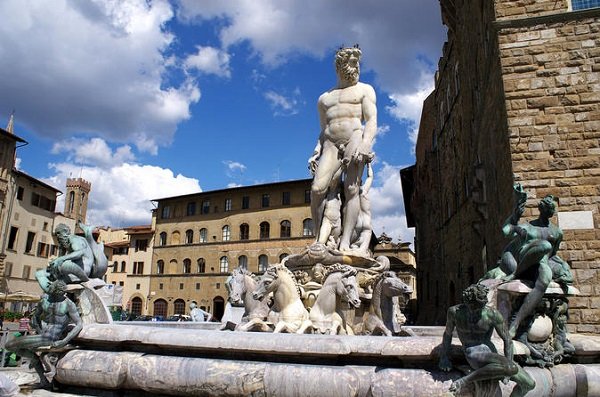
When the most populous city of Western civilization fell into the hands of the Turks, Byzantine Greek poets, educators — ioannis Argiropoulos and Konstantin Laskaris — emigrated to the Latin world. Until that moment, the Italian peninsula, which had been infused with religious bigotry, soon experienced a philosophical enlightenment, especially since they went to Florence with their own ideas and scrolls of Ancient Greek philosophy. In a sense, it was the last Byzantines who triggered the Renaissance and paved the way for european enlightenment. If the conquest of Istanbul had never happened, it would have been very difficult to predict how far behind the Renaissance and Reform would have come.
Those who don’t run away
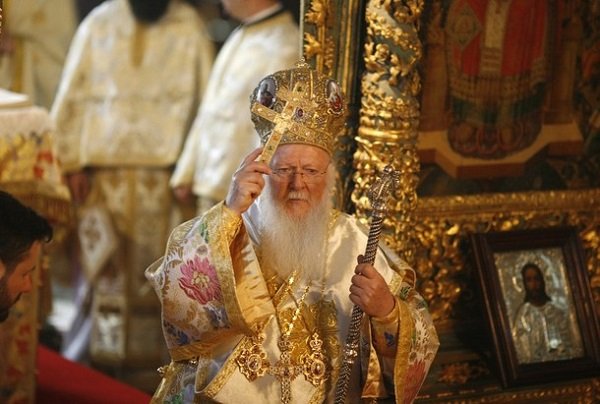
This group makes up the majority. Anyway, one of the first works that Sultan Mehmet the Conqueror did after the conquest was to appoint Georgios Skolarios as the new patriarch and protect the Eastern Church and almost all Orthodox Christians. How big the Catholic World would have grown and what socks it would have put on the head of the Ottoman Empire if it chose to destroy the Orthodox Church are also controversial issues. As a matter of fact, after this decision, Istanbul carries this demographic heterogeneity to the last days of the empire. In fact, in the early 20th century, the census found that the non-Muslim population and Muslims were almost half equal. Greeks continue to live in galata and fener districts. These Greek-Ottomans, also known as panaryots, also gave the empire many statesmen in the future. The part that resisted escaping from this group, which was finally forced to flee in the population exchange after the War of Independence, is also fleeing as a result of the Events of 6-7 September. It would probably be safe to assume that the Greek community, which remains a shadow minority of around 5-6 thousand people today, especially on the islands, should be considered as the last representatives of Byzantines that are not in the diaspora.
Effects on the present
At the heart of the Greek-Turkish conflict is still the effects of conquest. In 1919, the resurgent “Megali Idea” in Greek society focused on the recapture of Istanbul and the re-patriarchate of Hagia Sophia, invading Izmir with nationalist feelings and starting what we now know as the War of Independence. Today, the conquest of Istanbul has become a prestige, an object of slurs. Whenever a Greek football team is paired, it is obligatory to unfurle the banner “Since 1453”. Greeks, on the other hand, show plenty of Turkish hostility every May 29th when commemorating Constantine Palaiolagos. It is believed that he was sleeping in a cave below Yedikule and that when the time came, he would wake up and take Istanbul back.

